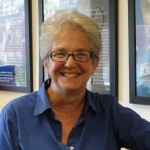Our laboratory is interested in the response to injury. Injury may be a traumatic event or a change in the integrity of the tissue that occurs from an onset of disease. Our lab uses the cornea to study cell repair as it is a simple model tissue as it is avascular yet highly innervated tissue. In addition, corneal disease and injury remain a major cause of blindness (World Health Organization) and affects over 10 million people worldwide. Diseases such as Type II Diabetes present an overwhelming problem to the cornea with rapid changes in innervation and wound repair. Our lab uses a number of in vitro, organ culture and in vivo models to examine wound repair using a pre-Type II diabetic model. Recently we have shown that changes in the sensory innervation and expression profile in the cornea can occur rapidly and may alter cell communication that underlies collective migration. As the cornea is avascular the wound response is sensitive to soluble factors released with injury that induce downstream signaling events. We speculate that the communication occurs through a family of proteins called pannexins. In addition, the proper repair of the pre-diabetic tissue may be compromised by a family of proteins along the surface of epithelial cells where the polarity of the proteins is misregulated. To determine cell communication after injury we perform high resolution live imaging technologies to examine changes in calcium mobilization, cytoskeletal reorganization and cell motility over time. These are combined with confocal imaging of fluorescent probes in fixed tissues. These are analyzed using a number of MATLAB scripts. These studies require an understanding of the dynamics between matrix molecules and growth factors and how they are released from various depots.
Representative Publications
-
Lee YK, Segars KL, Trinkaus-Randall V. Multiple Imaging Modalities for Cell-Cell Communication via Calcium Mobilizations in Corneal Epithelial Cells. Methods Mol Biol. 2020 Nov 07. PMID: 33159251
-
Xu P, Londregan A, Rich C, Trinkaus-Randall V. Changes in Epithelial and Stromal Corneal Stiffness Occur with Age and Obesity. Bioengineering (Basel). 2020 Feb 07; 7(1). PMID: 32046198
-
Lee Y, Kim MT, Rhodes G, Sack K, Son SJ, Rich CB, Kolachalama VB, Gabel CV, Trinkaus-Randall V. Sustained Ca2+ mobilizations: A quantitative approach to predict their importance in cell-cell communication and wound healing. PLoS One. 2019; 14(4):e0213422. PMID: 31017899
-
Onochie OE, Onyejose AJ, Rich CB, Trinkaus-Randall V. The Role of Hypoxia in Corneal Extracellular Matrix Deposition and Cell Motility. Anat Rec (Hoboken). 2020 06; 303(6):1703-1716. PMID: 30861330
-
Onochie OE, Zollinger A, Rich CB, Smith M, Trinkaus-Randall V. Epithelial cells exert differential traction stress in response to substrate stiffness. Exp Eye Res. 2019 04; 181:25-37. PMID: 30653966
- Kneer K, Green MB, Meyer J, Rich CB, Minns MS, Trinkaus-Randall V. High fat diet induces pre-type 2 diabetes with regional changes in corneal sensory nerves and altered P2X7 expression and localization. Exp Eye Res. 2018 Jun 05; 175:44-55.. PMID: 29883639
- Lee A, Karamichos D, Onochie OE, Hutcheon AEK, Rich CB, Zieske JD, Trinkaus-Randall V. Hypoxia modulates the development of a corneal stromal matrix model. Exp Eye Res. 2018 May; 170:127-137. PMID: 29496505.
- Barrios J, Patel KR, Aven L, Achey R, Minns MS, Lee Y, Trinkaus-Randall VE, Ai X. Early life allergen-induced mucus overproduction requires augmented neural stimulation of pulmonary neuroendocrine cell secretion. FASEB J. 2017 May 31. PMID: 28566470.
-
Minns MS, Trinkaus-Randall V. Purinergic Signaling in Corneal Wound Healing: A Tale of 2 Receptors. J Ocul Pharmacol Ther. 2016 Oct; 32(8):498-503. PMID: 27643999
-
Minns MS, Teicher G, Rich CB, Trinkaus-Randall V. Purinoreceptor P2X7 Regulation of Ca(2+) Mobilization and Cytoskeletal Rearrangement Is Required for Corneal Reepithelialization after Injury. Am J Pathol. 2016 Feb; 186(2):285-96. PMID: 26683661
-
Derricks KE, Trinkaus-Randall V, Nugent MA. Extracellular matrix stiffness modulates VEGF calcium signaling in endothelial cells: individual cell and population analysis. Integr Biol (Camb). 2015 Sep; 7(9):1011-25. PMID: 26183123
Complete list can be found at BU Profiles
